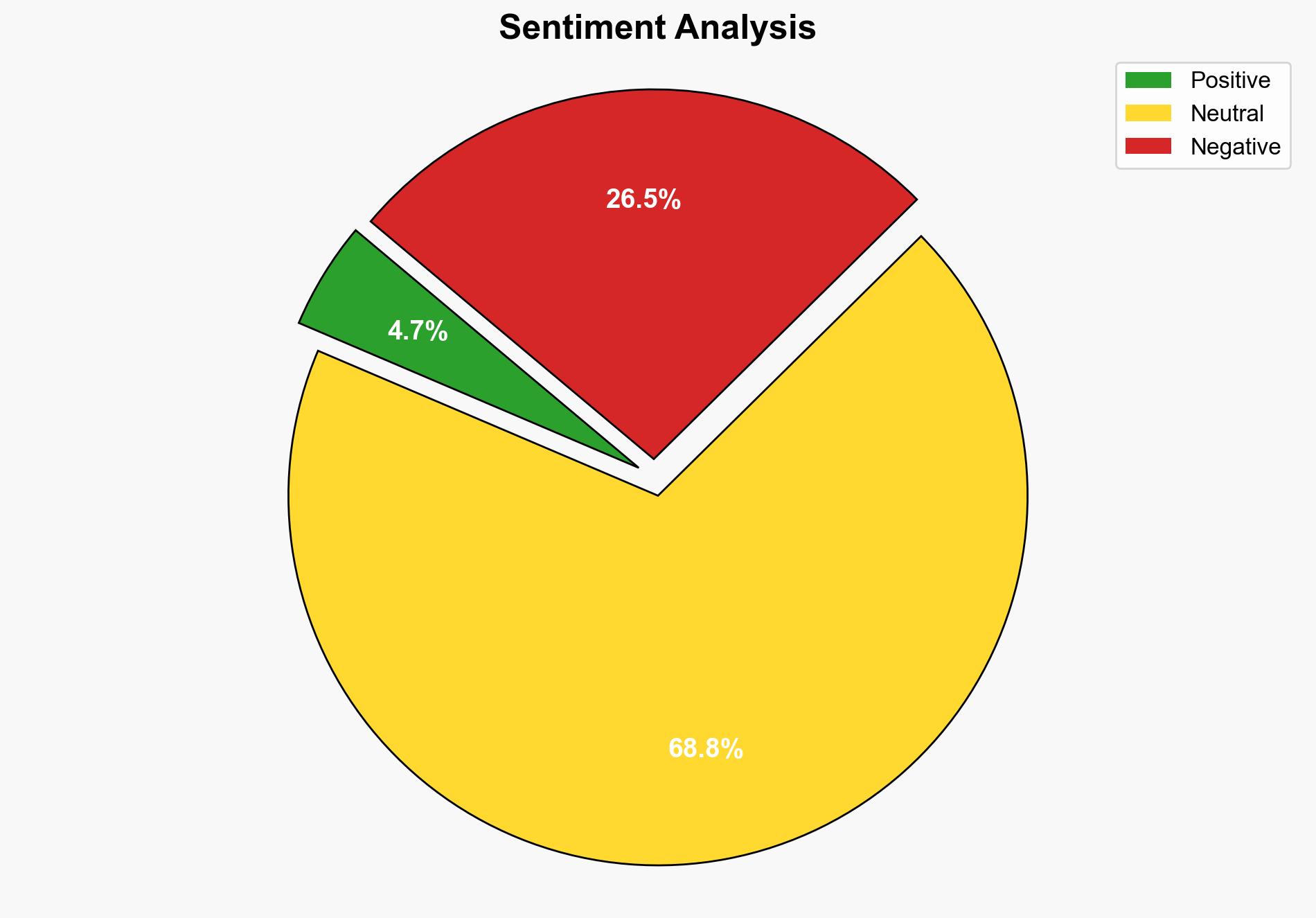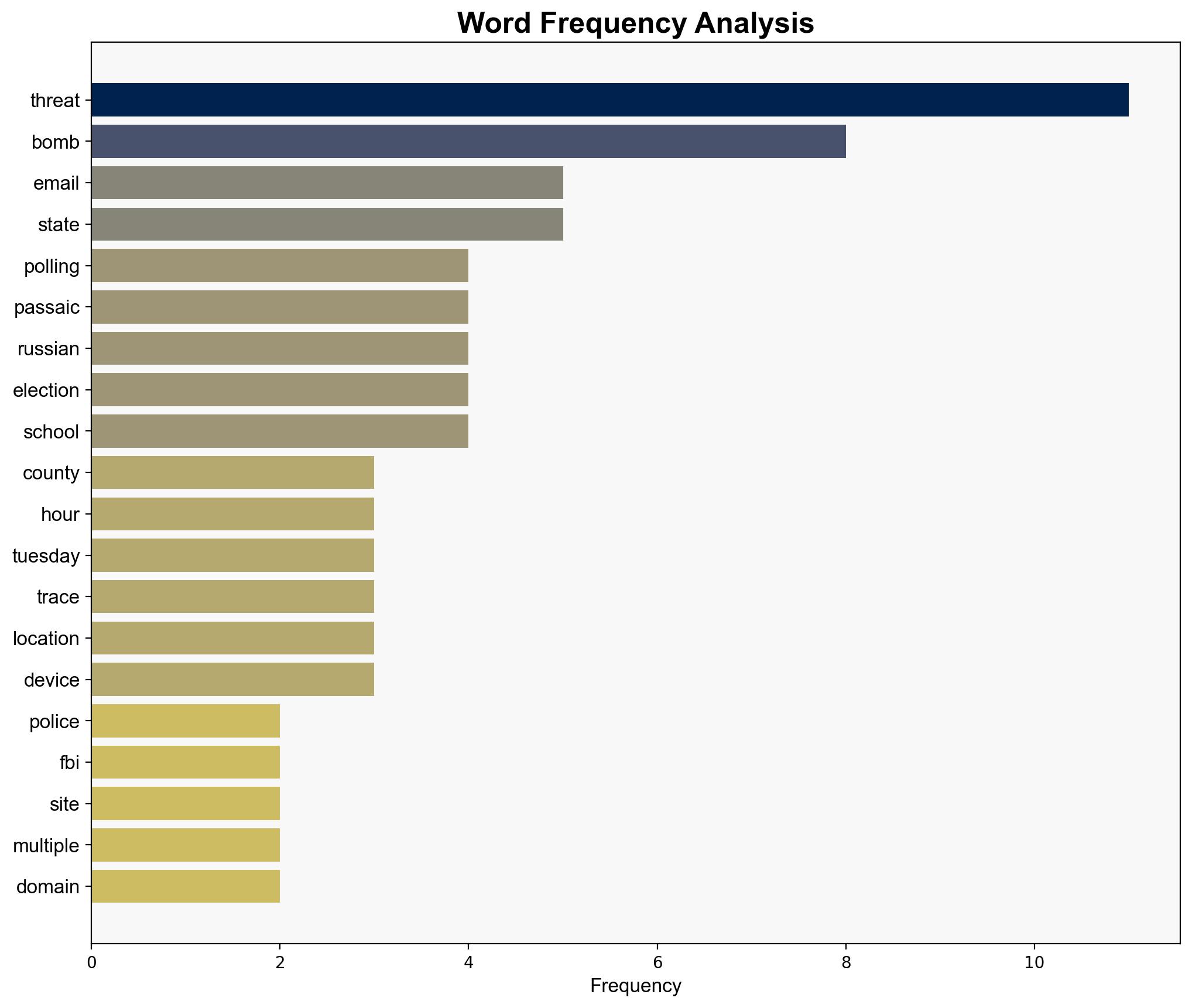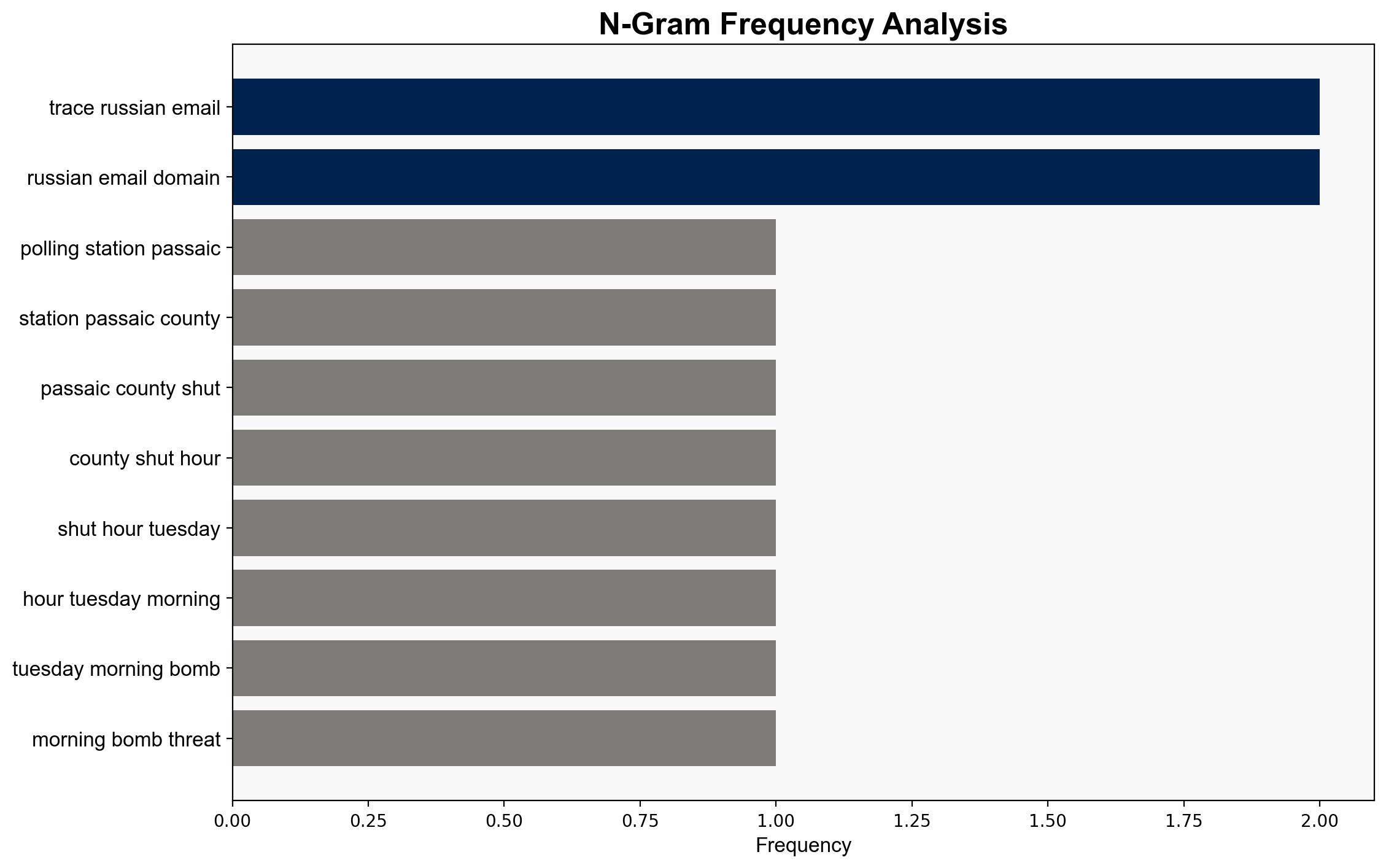Bomb Threats At NJ Polling Stations Connected To Russian Email Address – The Daily Caller
Published on: 2025-11-06
Intelligence Report: Bomb Threats At NJ Polling Stations Connected To Russian Email Address – The Daily Caller
1. BLUF (Bottom Line Up Front)
The most supported hypothesis is that the bomb threats were a coordinated hoax designed to disrupt the electoral process, potentially with foreign influence or domestic actors using foreign elements as a cover. Confidence level is moderate due to the lack of conclusive evidence linking the threats directly to foreign operatives. Recommended action includes enhancing cybersecurity measures and public communication strategies to mitigate the impact of such threats.
2. Competing Hypotheses
1. **Foreign Influence Hypothesis**: The bomb threats were orchestrated by foreign actors, possibly Russian, to disrupt the U.S. electoral process and undermine public confidence in election security.
2. **Domestic Hoax Hypothesis**: The threats were a domestic operation using a Russian email address as a false flag to create confusion and panic, with no real foreign involvement.
Using the Analysis of Competing Hypotheses (ACH) 2.0, the Domestic Hoax Hypothesis is better supported due to the quick tracing of the threats to a juvenile and the lack of credible evidence of foreign operatives’ involvement.
3. Key Assumptions and Red Flags
– **Assumptions**: It is assumed that the use of a Russian email domain implies foreign involvement. This could be a cognitive bias, as such domains can be easily accessed by domestic actors.
– **Red Flags**: The rapid tracing of the threat to a juvenile suggests a lack of sophistication typical of state-sponsored operations. The absence of any real explosive devices further supports the hoax theory.
– **Inconsistent Data**: The manifesto and detailed schematics mentioned in the threat were not corroborated with any physical evidence, raising questions about their authenticity.
4. Implications and Strategic Risks
– **Patterns**: This incident highlights a potential pattern of using cyber elements to create physical disruptions in critical national processes.
– **Cascading Threats**: If not addressed, similar hoaxes could be repeated, causing widespread panic and undermining public trust in electoral integrity.
– **Geopolitical Risks**: Misattribution of such incidents to foreign actors could escalate tensions unnecessarily.
– **Psychological Impact**: Repeated threats can lead to voter apathy and reduced turnout, affecting democratic processes.
5. Recommendations and Outlook
- Enhance cybersecurity protocols to detect and prevent similar threats in the future.
- Develop a robust public communication strategy to quickly dispel misinformation and reassure the public.
- Scenario Projections:
- Best Case: Improved security measures prevent future disruptions, maintaining public confidence.
- Worst Case: Continued threats lead to significant voter suppression and public distrust.
- Most Likely: Increased vigilance and public awareness reduce the impact of future hoaxes.
6. Key Individuals and Entities
– Kenneth Hirmann
– Matthew Platkin
7. Thematic Tags
national security threats, cybersecurity, counter-terrorism, regional focus





